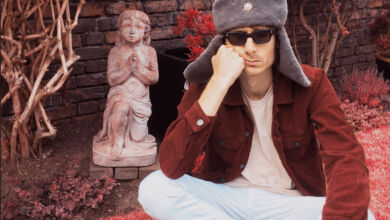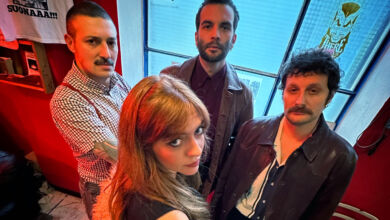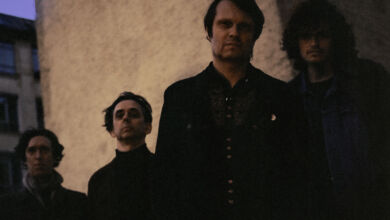
(2 CD set, Future Noise)
Often, the hallmark of a genuinely brilliant concept is that one is immediately thinks, ‘Why hasn’t this been done before?’ This is especially true of the first instalment of Watch The Closing Doors, the start of a projected six part series in which Kris Needs documents the Big Apple’s musical lineage decade-by-decade.
Fittingly, Volume 1 is a sprawling broth of inter-related musical styles, most of which have their origins in locations far removed from New York City, the artists responsible for creating them having graduated toward the almost irresistible pull of America’s cultural epicentre. As Suicide’s Martin Rev (who played a significant role in the genesis of this set) rightly observes, ‘New York was like the centre of the arts, like Paris and Vienna before them. After those, in all the arts and music, everybody came to New York, all the different varieties; opera, classical, dance. Everyone was in New York. Miles Davis came to New York, everybody.’
Like so many of the artists he has selected, compiler Kris Needs also felt the magnetic draw of New York, ultimately relocating to the city in the mid 1980s, to experience its glamour and grime in more or less equal measure, and adding his own creativity to a lineage defined by this collection. ‘This first run of tracks is intended as a rapid fire illustration of the amazingly diverse musical styles coursing through New York in these highly formative years,’ he explains.
Although the generic specifics of the material included here ranges from gospel to the electronic avant garde (and all points in-between) much of Watch The Closing Doors is interconnected – via the relationship of its content to the city, the cross-fertilisation of musical styles and the way in which certain artists (Dizzy Gillespie for instance) seem to pop up time and again as the history unfolds. Genre distinctions are irrelevant – as Primal Scream’s Bobby Gillespie asserts, ‘Music’s the only place where there are no frontiers apart from what you lack in your own imagination.’ Structurally, the collection is well thought out – the first disc establishes a firm sense of location and era, while the second expands upon this to demonstrate the way in which New York provided the setting for successive waves of groundbreaking creative development.
New York’s subway system provides a recurrent motif throughout the collection – from Needsy’s eye-catching sleeve art, through the manner in which doo-wop titans the Paragons used station platforms as acoustic caverns in which to hone their harmonies, and – most literally – in the opening track, Duke Ellington’s ‘Take The “A” Train’, which provides a wholly appropriate theme for the compilation as a whole.
The sense of this material acting as a starting point for much of New York’s subsequent creative progression is well defined; Cozy Cole’s visceral backroom beats can be viewed as a germinal indication of the way in which hip-hop subsequently employed raw rhythms; Frankie Lymon, as Martin Rev asserts, is very much a prototype Johnny Thunders; Machito’s Cubop polytheism and Cab Calloway’s style point the way forward to August Darnell and Coati Mundi; groups such as the Almanac Singers established a Greenwich Village folk tradition that would be developed and popularised by the likes of Bob Dylan; while the sonic experimentalism of the incomparable Raymond Scott and Thelonius Monk’s unsettling, perverse beauty connects with the way in which Suicide spliced electronics to bebop and doo-wop to create their own unique brand of Ur-punk.
Kris Needs’ extensive sleeve notes (it’s basically a book) are essential to appreciating the full resonance of the New York Stories being recounted on the two discs. Watch The Closing Doors features a wealth of tracks that wholly evoke the city in various forms – Cab Calloway and Big Maybelle embody Harlem’s seamy underside; the Five Satin’s anthemic doo-wop encapsulates night time Manhattan; the Paragons transport the listener to an era of street corner singing battles; and Charles Mingus’ ‘Goodbye Pork Pie Hat’ seems to have informed the incidental music to innumerable NYC cop shows.
This is also a social history – while Billie Holiday’s ‘Autumn In New York’ represents a profoundly personal valediction to a city in which she lived and died, Harry Belafonte’s calypso infused ‘Matilda’ became popular with migrants who interpreted the song as a bridge back to better, less impoverished and oppressed, times back home. Similarly, the social development of New York is fully examined – Faye Adams’ ‘Shake A Hand’ being indicative of the way in which gospel influenced rhythm and blues and provided a religious release from the difficulties of hard times.
The polyglot nature of the Big Apple provided a battleground amid which racism was encountered and largely overcome, and this aspect of the city’s history is well represented by the likes of Louis Armstrong (who transcended racial boundaries through his talent and positivity), Dizzy Gillespie’s punkish rejection of a mainstream from which he was excluded, the New Lost City Ramblers’ opposition to the politics of oppression, and Allen Ginsberg’s embodiment of the manner in which New York lined up at the vanguard of dismissing the paranoid ultra-conservatism of the McCarthy era.
There’s also no shortage of pioneering music on offer here – key elements of rock’n’roll’s sex-orientated DNA can be found within the scatology of Danny Taylor’s ‘Coffee Daddy Blues’ and Sonny Terry’s ‘Custard Pie Blues’, while Big Joe Turner’s ‘Morning, Noon and Night’ is nothing if not rock’n’roll in its most primal state. Additionally, the way in which existing musical forms cross-pollinated to create new sounds is represented by Horace Silver’s fusion of blues, jazz, latin and gospel, or the Drifters providing a bridge between gospel, doo-wop and the nascent rock’n’roll.
Having spent the best part of a enjoyable day traversing the tangled lines of this era of New York’s musical biography, I caught up with Needsy and asked him if there was anything that he regretted being unable to include on the set. ‘I really wanted rampant excess king genius Charlie Parker but, like several others, couldn’t get past record company licensing bullshit,’ he reveals. ‘As I said in the notes, you could write what I knew about experimental music on a gnat’s scrotum, same going for 50s jazz, but a crash course told me about whole new worlds – and also that I must be mad attempting such a project.’
So what about Volume 2? ‘The 60s is shaping up, but even harder to get everything on to two CDs. So far, we’ve got the Velvets, Albert Ayler, the Chiffons, Shangri-Las, Nico, Karen Dalton, Tim Rose, Sun Ra, Lenny Bruce, West Side Story, Miles Davis, plus I really want Machine Gun by Hendrix – he started and was discovered in NY, the track’s live at the Fillmore East and remains the most devastating comment on Vietnam war, which was raging at the time. There’s also another Marty Rev chat coming up, plus I’m hoping for handy hints from Chris Stein, It’s like a snowball which could assume Empire State proportions by the 80s at this rate!’
Watch The Closing Doors is a landmark document – that not only comprehensively represents its subject matter, it will – as it did both its compiler and myself – expose you to forms of music that you might never otherwise engage with. It looks good, it sounds good, and by gum, it’ll do you good – go check it out.
Originally posted 2011-06-24 11:36:51. Republished by Blog Post Promoter








